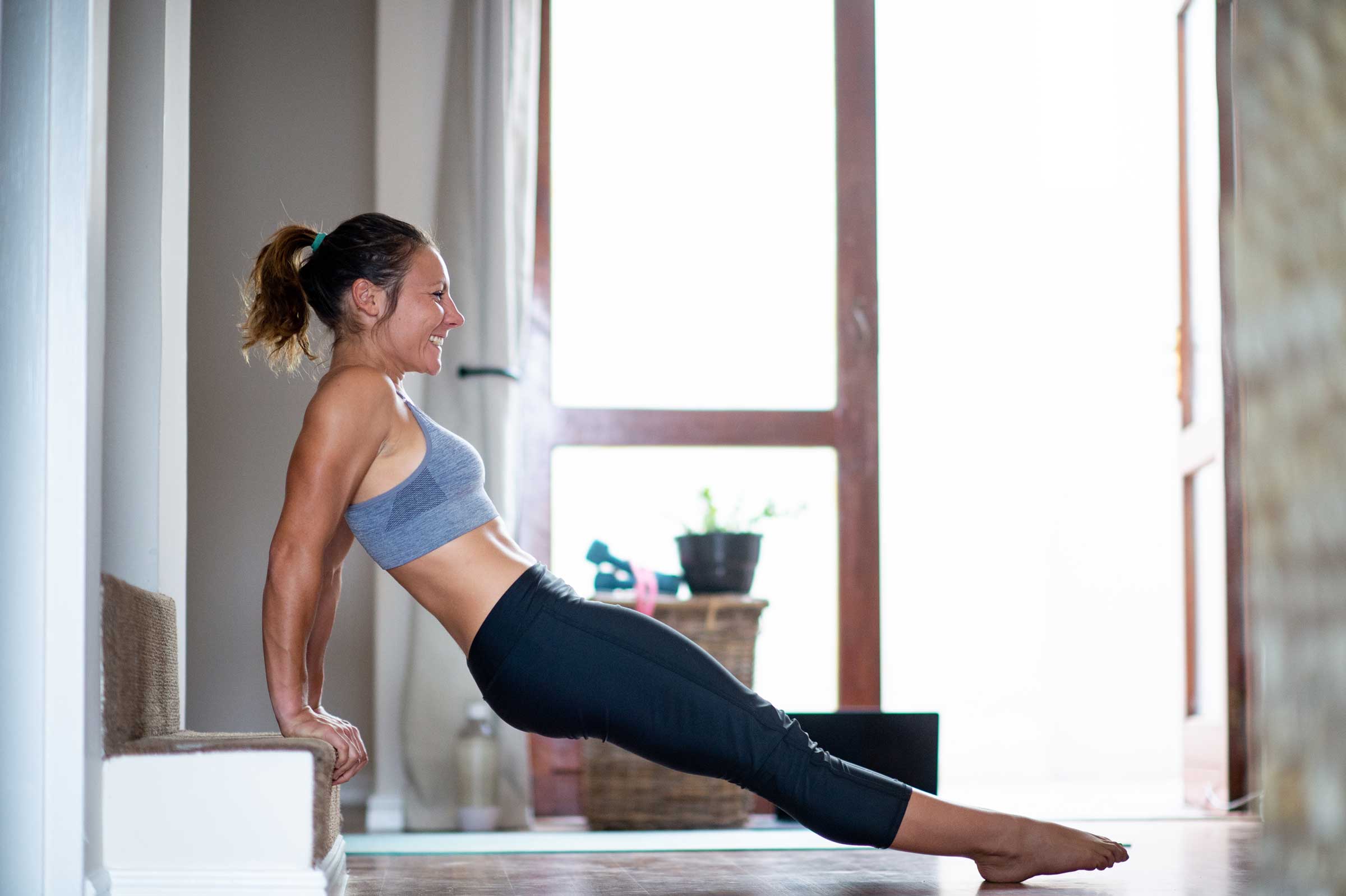We all know that getting sun exposure is important for keeping up on vitamin D levels and improving mood. Other studies have also found that spending time outdoors, even in the winter, improves concentration.
But going for a run outside just isn’t always an option.
The truth is, running in extremely frigid temperatures can be dangerous, particularly if there is rain, ice, or darkness involved. Research has found that running injuries do increase, if only slightly, in the winter and that knees were the most commonly injured body part.
Sometimes it is safer to get your dose of sunshine with a short, mild walk, and opt for breaking a sweat indoors. There are plenty of ways to gain fitness when the great outdoors isn’t cooperating with your training.
4 Winter Workout Alternatives You’ve Got to Try
If you have access to a flight of stairs:
Try running the steps. This seemingly simple workout is a great way to challenge your quad and glute muscles. Several studies have also found stair running exercises to be beneficial in improving VO2 Max (an indicator of aerobic endurance, it is the amount of oxygen your body can utilize in a minute) in both seasoned recreational runners and sedentary individuals just beginning an exercise program.
Find some stairs — your home, apartment, or gym stairs would all work — and run up the flight as fast as you can. Walk or jog down. Then, repeat the set by sprinting back up again. See how many flights of stairs you can do without taking a break. Or try this full-blown stair workout, recommended by running coach Kristin Metcalf.
If running the stairs feels like a bit too much, even just walking them has been proven to enhance overall well-being. “Climbing stairs every day may help us feel awake and full of energy,” wrote the authors of a study published in the journal Science Advances that looked at how every day activities affect physical well-being and mental health. An easy way to incorporate this would be to opt for the stairs over elevators or spreading your daily activities around your home in a way that would require you to move up and down the stairs more often.
If you’re stuck at home:
An obvious winter workout option involves getting creative at home. Investing in some light, eight- to 15-pound weights would be ideal for situations like these, but not entirely necessary. You can still get a great workout in without any weights. Apps like Nike Training Club or Peloton provide stripped-down workouts that you can select based on difficulty. When the global pandemic started shutting down gyms and fitness classes last spring, many online classes and services started operating for free on a limited basis.
Don’t want to use your phone or television for all your indoor exercises? Just repeat sets of jumping jacks, bridges, and pushups. For more upper body work, search for some heavy household objects (coffee table books and textbooks work great) to use for squats and balancing exercises or add in some tricep dips using a step or kitchen chair.
If you’re buried under a fresh blanket of snow:
Studies have shown that many people don’t perceive household chores to be physical activity. Not only that, but they’ll forgo a chore because they need to get in a workout. The reality is that there are many routine activities that are just as physical as traditional exercise. Shoveling snow, for example, is definitely an intense winter workout.
So why not get outside and shovel the driveway when it’s too snowy for a run? Better yet: Shovel your neighbor’s driveway while you’re at it. Your arms will get a great workout and you’ll be helping someone else out.
However, make sure you are shoveling safely to avoid sustaining an injury through this winter chore. The National Safety Council recommends that you start slow and stretch before you begin (it is working your body, after all), be sure to lift the snow with your legs and not your back, shovel while the snow is fresh and lighter (which might mean you need to go out several times in a day), and don’t work to the point of exhaustion.
If your legs are a bit tired or sore:
Take this as your cue to give your body some TLC. Spend time stretching and using a foam roller if you have one. If you want to get out and move a little and you just don’t want to brave the cold, drive to the mall or to a large marketplace (like Costco or Ikea). Walking around will help loosen up your muscles and help your rest day be even more beneficial. If the thought of not running gives you anxiety, remember that one day will not make or break your training. Allowing your body to rest could even be the extra boost it needs to nail that next hard workout or long run.
Winter weather can be grueling, but it gives a runner the chance to stretch, strengthen, and engage other muscles that might get overlooked on a regular basis. The next time the weather alerts come in, think creatively about how you can use the change in routine to supplement (not sidetrack) your training.


